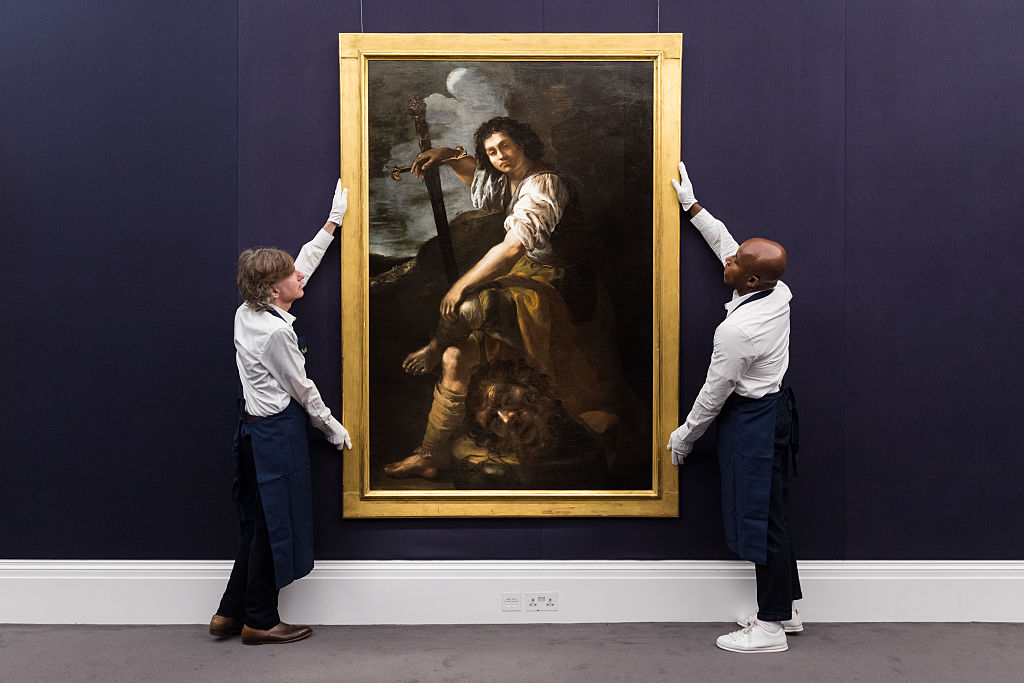To receive Morning Links in your inbox every weekday, sign up for our Breakfast with ARTnews newsletter.
The Headlines
OLD MASTERS, NEW APPEAL. The ongoing challenges facing the Old Masters are no secret: attribution and condition issues, diminishing supply, younger buyers struggling to relate… essentially, they’re not in vogue. However, according to the Observer, Old Masters are “making a quite comeback in London,” backed by a new collector base. It reports that long-term trends point to a price recalibration that could usher in “a more democratic Old Masters market.” This comes off the back of recent Old Masters evenings auctions in the UK capital that defied expectations, bringing in a combined £58 million ($78 million), excluding fees, for Christie’s and Sotheby’s, which is a marked increase on last year’s total. The category is now outperforming many others; apparently, one reason for this is because there are fewer speculators due to the art market’s recent troubles. “There’s less improvisation now. Buyers want security and professionalism. They expect due diligence, provenance, scholarly documentation and proper presentation. The challenge is living up to those expectations,” dealer Alessandra di Castro said.
Related Articles

FEE-FI-FO-FUM. Phillips recently announced its new fee structure, which is being billed as a “first-of-its-kind buyer’s premium structure” featuring “priority bidding,” the auction house said. Some in the art world, including Puck, are wondering if it will work. The new structure means it will charge the highest buyer’s premium of the Big Three houses on the first $1 million at 29 percent. Above the $1 million threshold, it will charge 22 percent up to $6 million, and then 15 percent on anything over that. The house is also now offering “priority bidding,” where buyers who commit to the low estimate any time up to 48 hours before the live auction will pay a lower fee. “Will Phillips’ tweaks really create more momentum? If a buyer submits a priority bid for (or above) the estimate some 48 hours or more before the auction and has the winning bid, that buyer will pay only a 25 percent buyer’s premium on the first $1 million,” Puck writes. “From there, they’ll shell out 20 percent from $1 million to $6 million, and 14 percent thereafter. If there are subsequent bids after the priority bid, but the priority bidder wins the auction, that bidder will still only pay the priority bid fee structure—starting with 25 percent, not 29 percent, on the hammer price.”
The Digest
Interested in what Hilde Lynn Helphenstein, aka Jerry Gogosian, plans to do after winding down her Instagram art world commentary? “[I want] to write a White Lotus or Succession of the art world,” she told The Art Newspaper at Art Basel last month. “Besides my creative endeavors, I want to work for MCH Group and eventually for Art Basel.” [The Art Newspaper]
Art Basel Miami Beach has released its exhibitor list, but Artnet reports that “some notable names are missing.” They include Galerie Buchholz, Company, Pilar Corrias, Dan Galeria, DC Moore, Greene Naftali, Galerie Nagel Draxler, David Nolan, and Waddington Custot. “Other shops not partaking, unsurprisingly, are the Los Angeles mainstay Blum, which announced its closure, Rhona Hoffman (ditto), and Peres Projects, which was declared insolvent in Germany in April,” the outlet writes. [Artnet]
On Wednesday, several US senators proposed new legislation that would apply anti-money laundering (AML) protections to a wide number of professionals in the US art market. The bill—titled the “Art Market Integrity Act”—would amend the Bank Secrecy Act to require art dealers and auction houses to comply with AML and counter-terrorism financing regulations. It would also apply to art advisors, consultants, custodians, galleries, museums, collectors, or “any other person who engages as a business as an intermediary in the sale of works of art.” [ARTnews].
London is getting a Museum of Brutalist Architecture (MoBA). A north London school hall is reportedly going to be restored to its 1960s appearance and become home to the new institution, thanks to a National Lottery Heritage Fund grant. [Ian Visits]
The Kicker
GET RADICAL, GET REPRESENTATION. Are you a struggling artist desperately seeking gallery representation? Art Basel Stories might be able to point you in the right direction. It spoke to several experts for tips. In case you didn’t know, gallery representation “can be crucial in securing an artist’s income, visibility – and, often, their legacy too,” it reports. “But artists by far outnumber galleries, and getting gallery representation can be an arduous path. So what do art dealers typically consider when they are expanding their roster?” Sadie Coles, founder of the eponymous London gallery, says she “always want to mount exhibitions with artists who are making the most important and radical art.” Artists take note. Stefan Benchoam, who runs Proyectos Ultravioleta in Guatemala City, echoes Coles’s sentiment: “We think less about the market implications, and more about that artist’s ability to push and expand the canon.” “However, whatever else, when it comes to securing gallery representation, all interviewees agree: What matters most is developing a rich body of work – and that can take time,” Art Basel writes.

